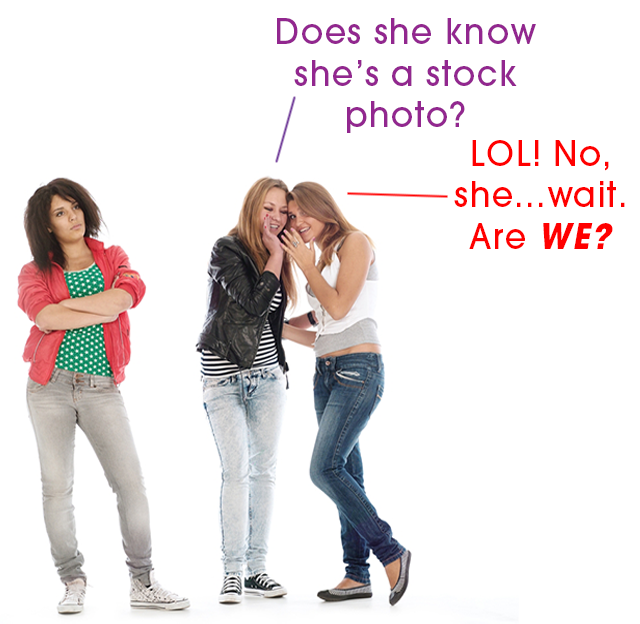Have you ever picked up an ad or a brochure with an attractive but vaguely familiar face on it? You start thinking to yourself, “Do I know her? Is that my husband’s friend from college? Is that someone I used to work with?” Then it hits you—you saw her in another ad for a completely different product.
 Stock Photos Aren’t for Every Business
Stock Photos Aren’t for Every Business
If you’re the purveyor of a line of luxury leather goods and you selected a model in a stock photo to be the embodiment of opulence and aspirational beauty, you probably wouldn’t be too happy if you saw that same photo in an ad for a discount retailer, would you? What if you saw that sporty-looking fellow that you chose to advertise your gym in an ad suffering from toenail fungus? Let’s hope readers don’t connect the two!
Unfortunately that’s the risk you run using stock photography, especially royalty-free images that are relatively inexpensive and plentiful with a quick internet search.
Sometimes Stock Photos Make Sense
Stock photos make a lot of sense when they depict still-life images that represent a concept or time period—the scales of justice, the quintessential doctor’s stethoscope, a retro telephone. Often they are beautifully composed and well lit photographs that don’t make sense to pay to recreate.
But the story is different when using stock photography that includes people. If you’re trying to represent your company, what works better, a generic photo of perhaps a little too diverse group of people lined up in a row? Or a shot of your actual staff members, maybe hanging out over their morning coffee in the break room? Your potential clients will most likely respond better to the latter. Plus your employees will love seeing themselves in print or on your website.
Sometimes a Photographer Makes Better Sense
Taking your own photos also allows you to tell the exact story you want to tell. Rarely if ever do you take a look at a stock photo and think, “That’s perfect. I wouldn’t change a thing!” Usually it will take an exhaustive search through pages and pages of photos of people with clothing that isn’t quite current—those wide-lapel suits with pleated pants, or environments that aren’t typical—that Danish modern room with the washing machine in the kitchen, before you narrow down your choices and try to pick the one that’s “pretty good” at representing your concept. Hiring a photographer will allow you to get the exact composition, subjects and surroundings to bring your ideas to life.
Things to Consider Before Choosing Stock Photography
Stock photos:
- Are usually priced by their resolution—that $20 image you bought for the web isn’t high enough resolution to work for your magazine ad.
- Have licenses that may have time limitations—be careful distributing old copies of promotional materials.
- May be limited to specific mediums—an image may be permissible for print, but not for the web.
- May have reproduction limits—only a set number of copies may be made.
- May only be accessible by a limited number of users in your company—make sure that only those licensed for the images are using them.
- May not be able to be used on items for resale—remember this before you try and resell that funny t-shirt you designed.
Stock photos certainly have their place. And they can make a bland advertisement come to life. Just make sure that the life they depict is the one you want to represent your product.

